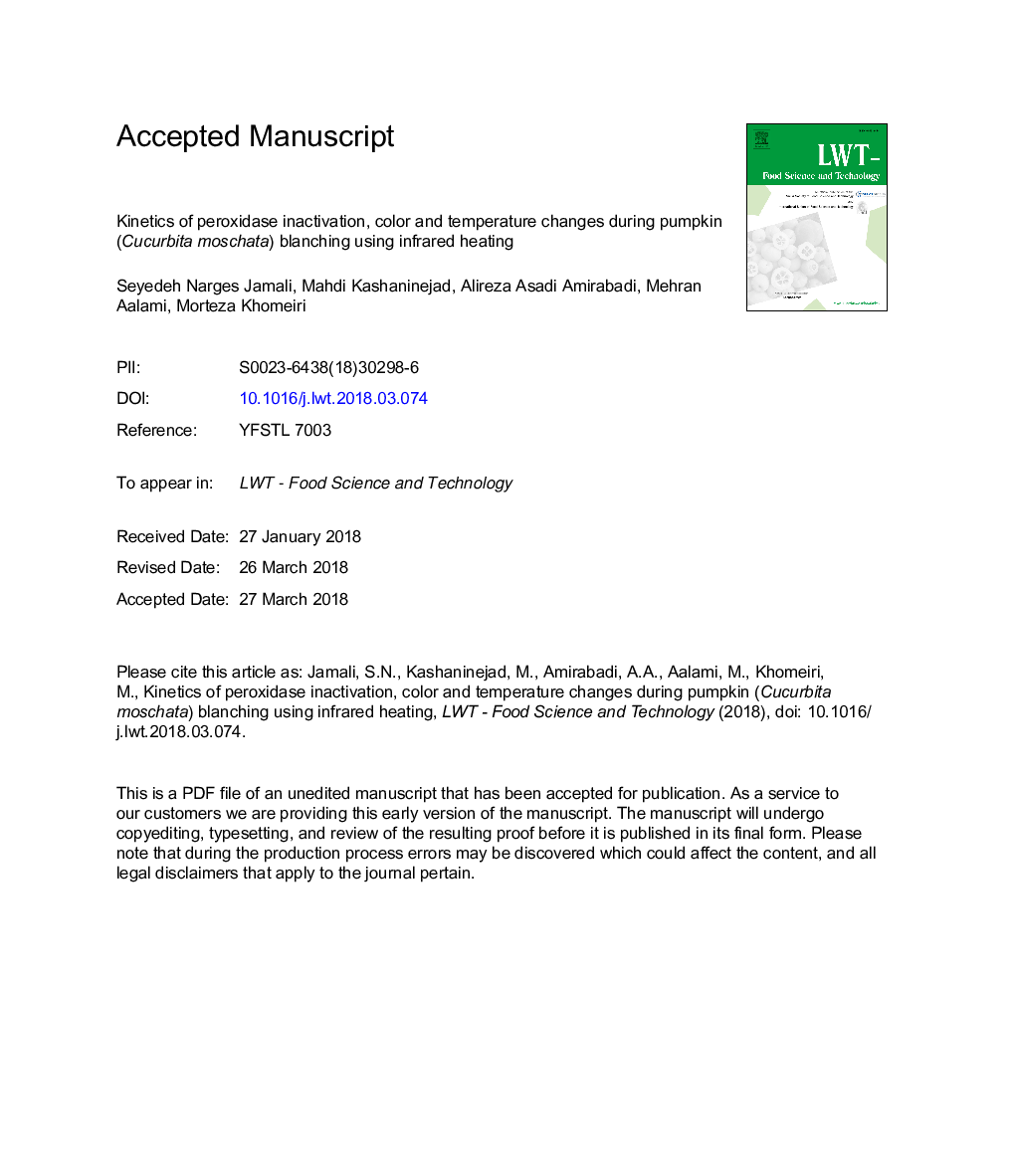| Article ID | Journal | Published Year | Pages | File Type |
|---|---|---|---|---|
| 8891053 | LWT - Food Science and Technology | 2018 | 36 Pages |
Abstract
Fresh Pumpkin is sensitive to microbial or enzymatic spoilage even in refrigeration temperatures, thus; blanching before freezing or canning is a proper way for preservation and commercialization of this product. In this study infrared irradiation was chosen as heating source and peroxidase as an indicator of enzyme inactivation adequacy for pumpkin blanching. Pumpkin purée was treated under 5 levels of temperature and 2 levels of sample thickness. Effect of thermal processing on the kinetic parameters of peroxidase inactivation (k, Ea, D and Z values) and color changes (ÎE) was investigated. Peroxidase inactivation of pumpkin samples followed a first order kinetics model. Calculated activation energies and Z values of enzyme inactivation process for 4 and 8â¯mm thickness levels were 130.63, 119.46â¯kJâ¯molâ1 and 18.18, 17.85â¯Â°C, respectively. No significant difference was observed between activation energies and Z values of two thickness levels. But, the effect of temperature and thickness on inactivation rate constants (k) and D values was significant (Pâ¯<â¯0.05). Investigation on the kinetics of color change was carried out by the calculation of ÎE changes during l log enzyme inactivation period. In this study, sample thickness showed a more significant effect on ÎE variations than temperature.
Related Topics
Life Sciences
Agricultural and Biological Sciences
Food Science
Authors
Seyedeh Narges Jamali, Mahdi Kashaninejad, Alireza Asadi Amirabadi, Mehran Aalami, Morteza Khomeiri,
